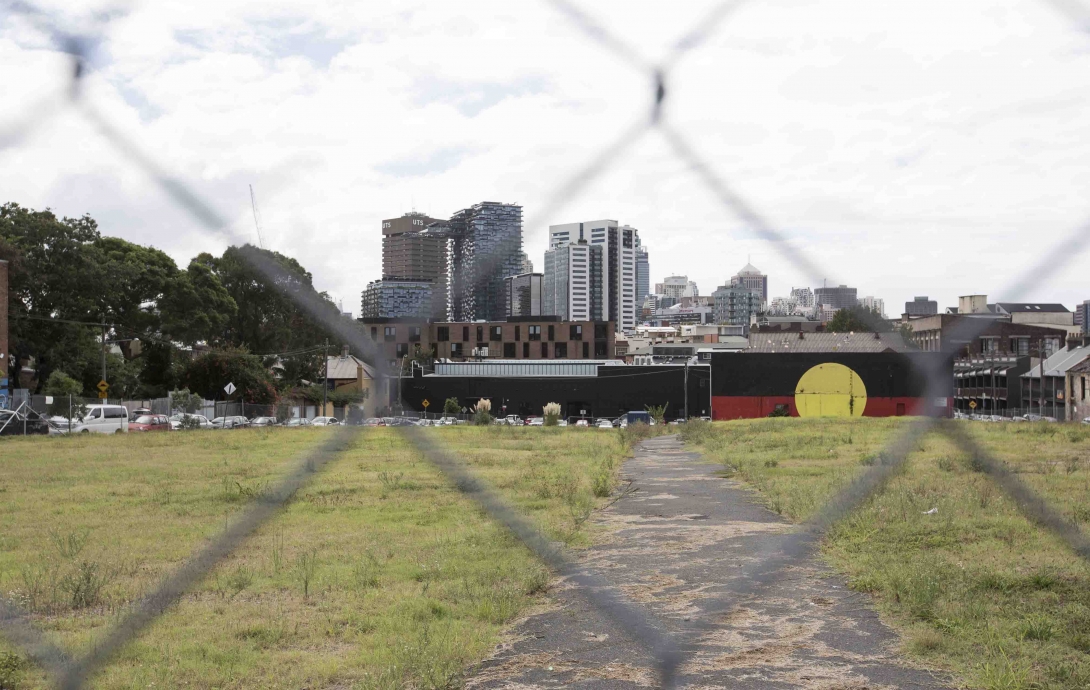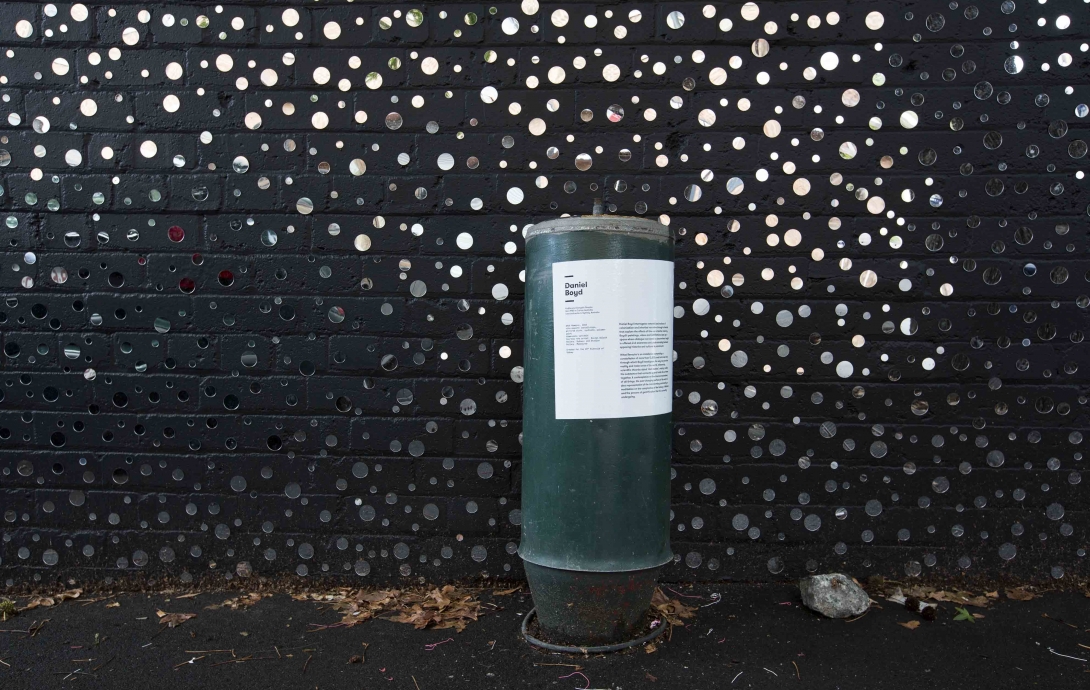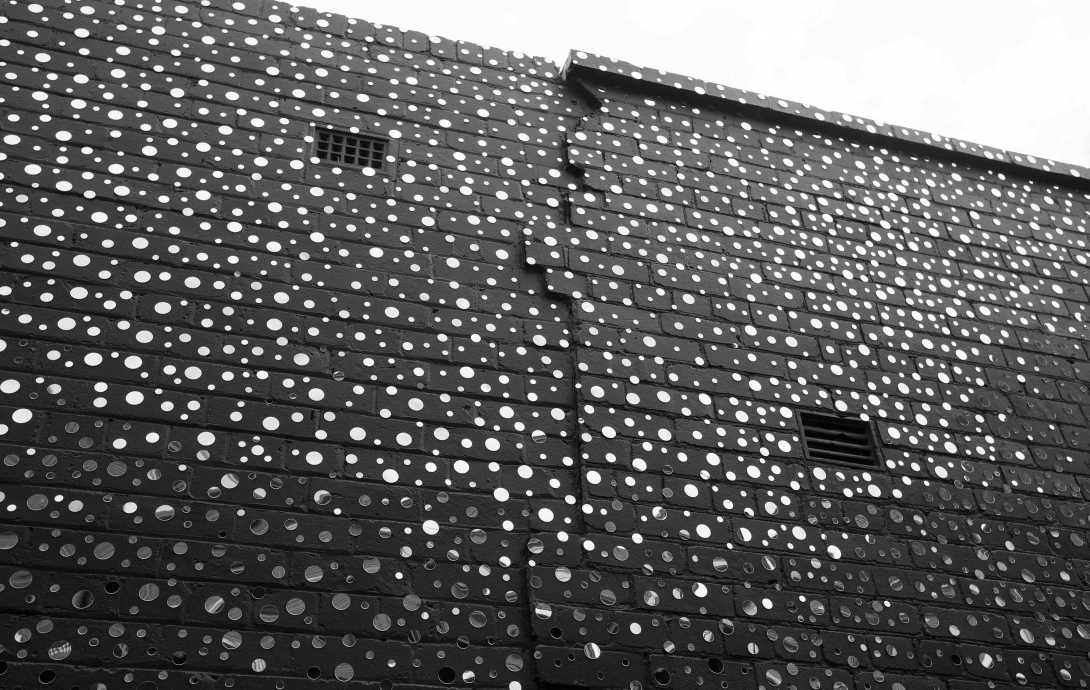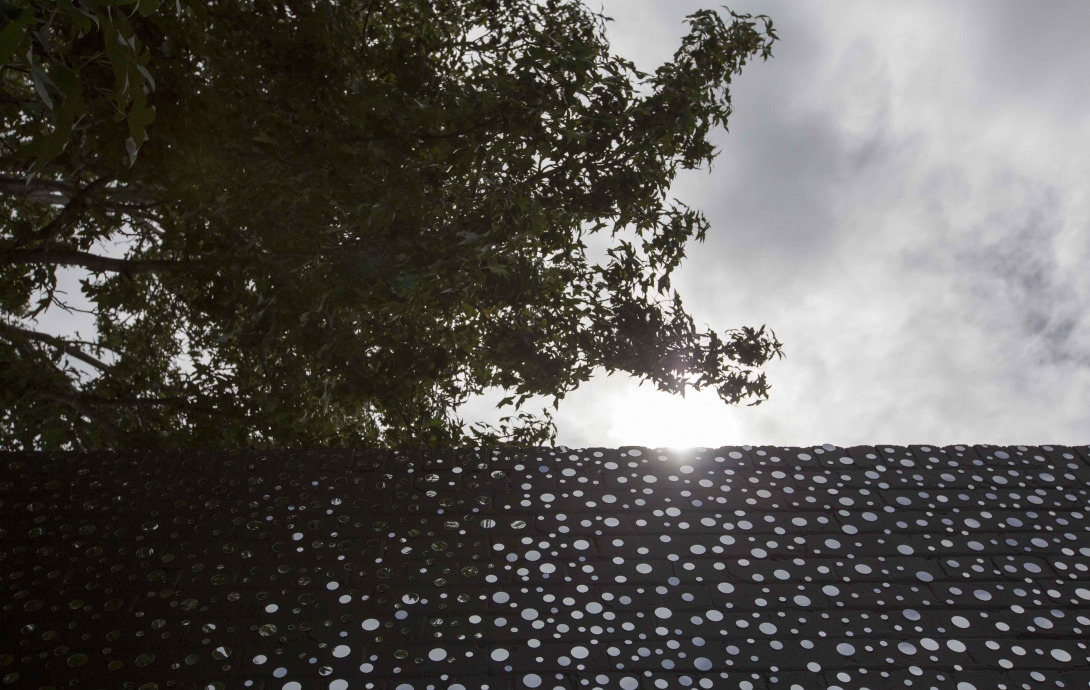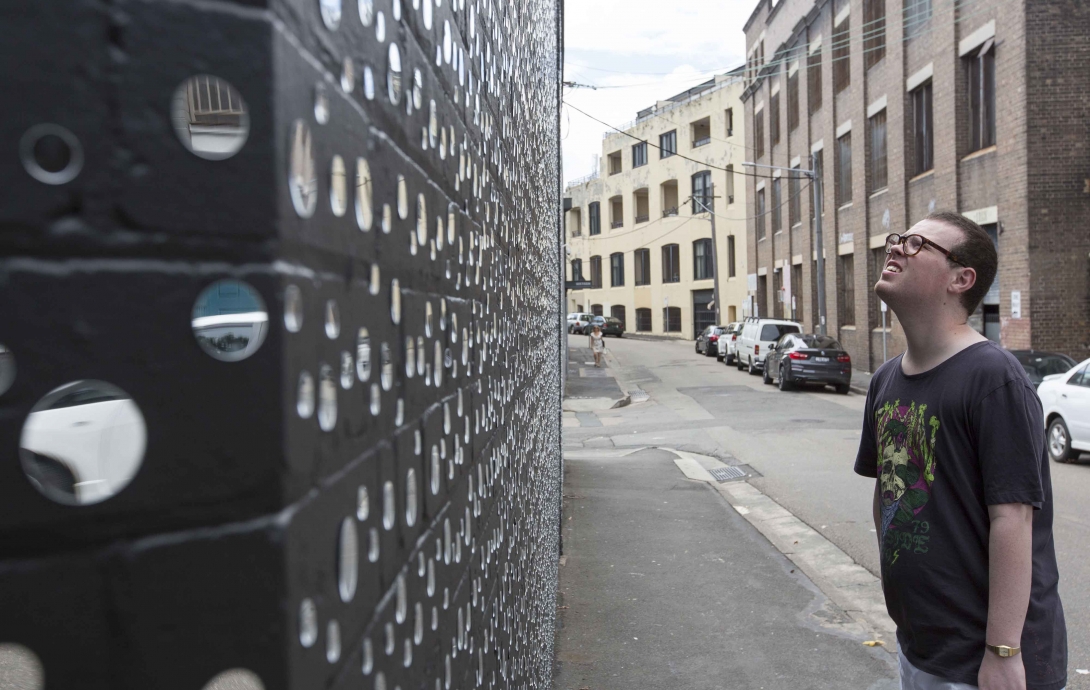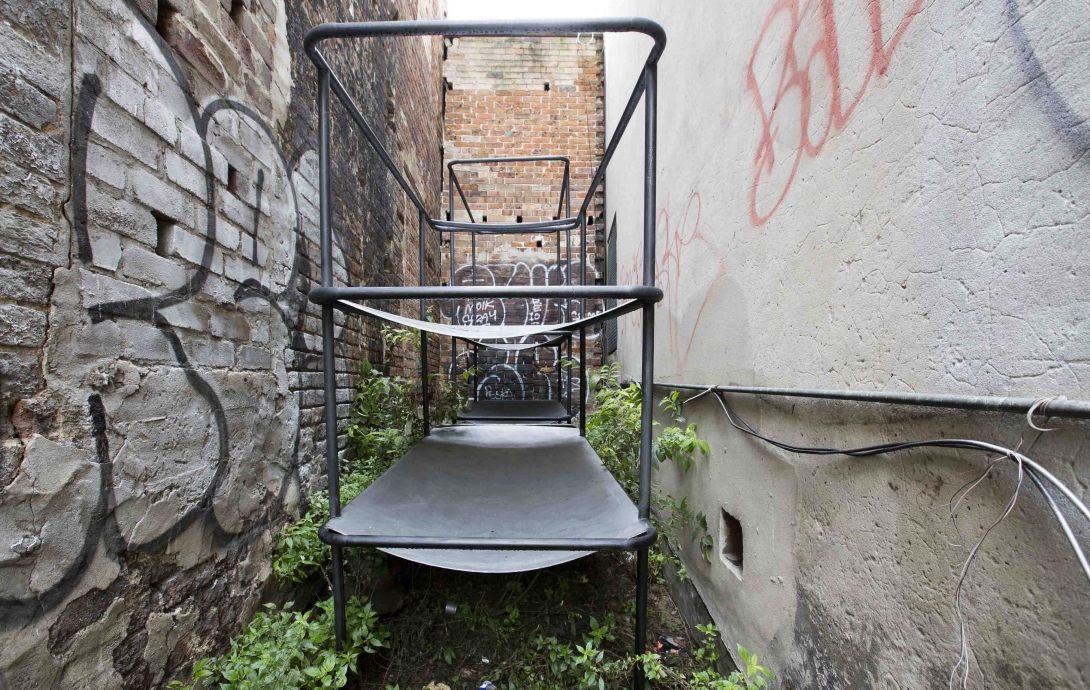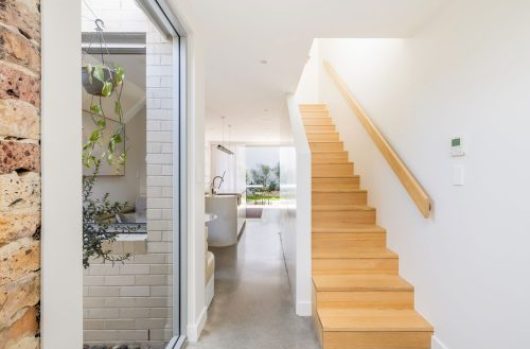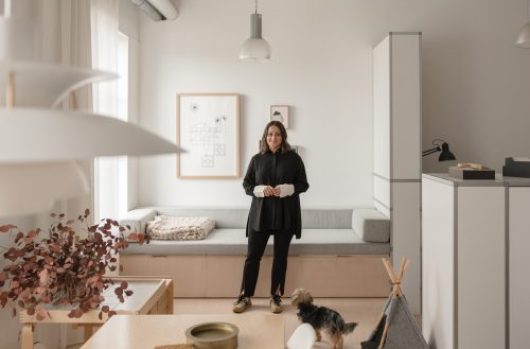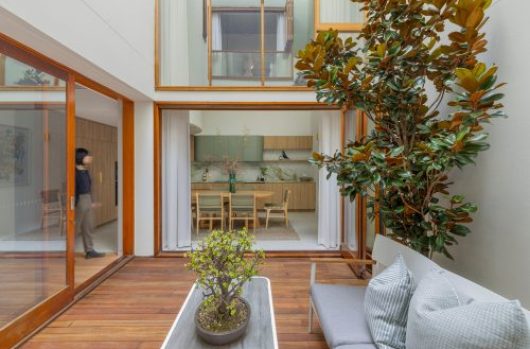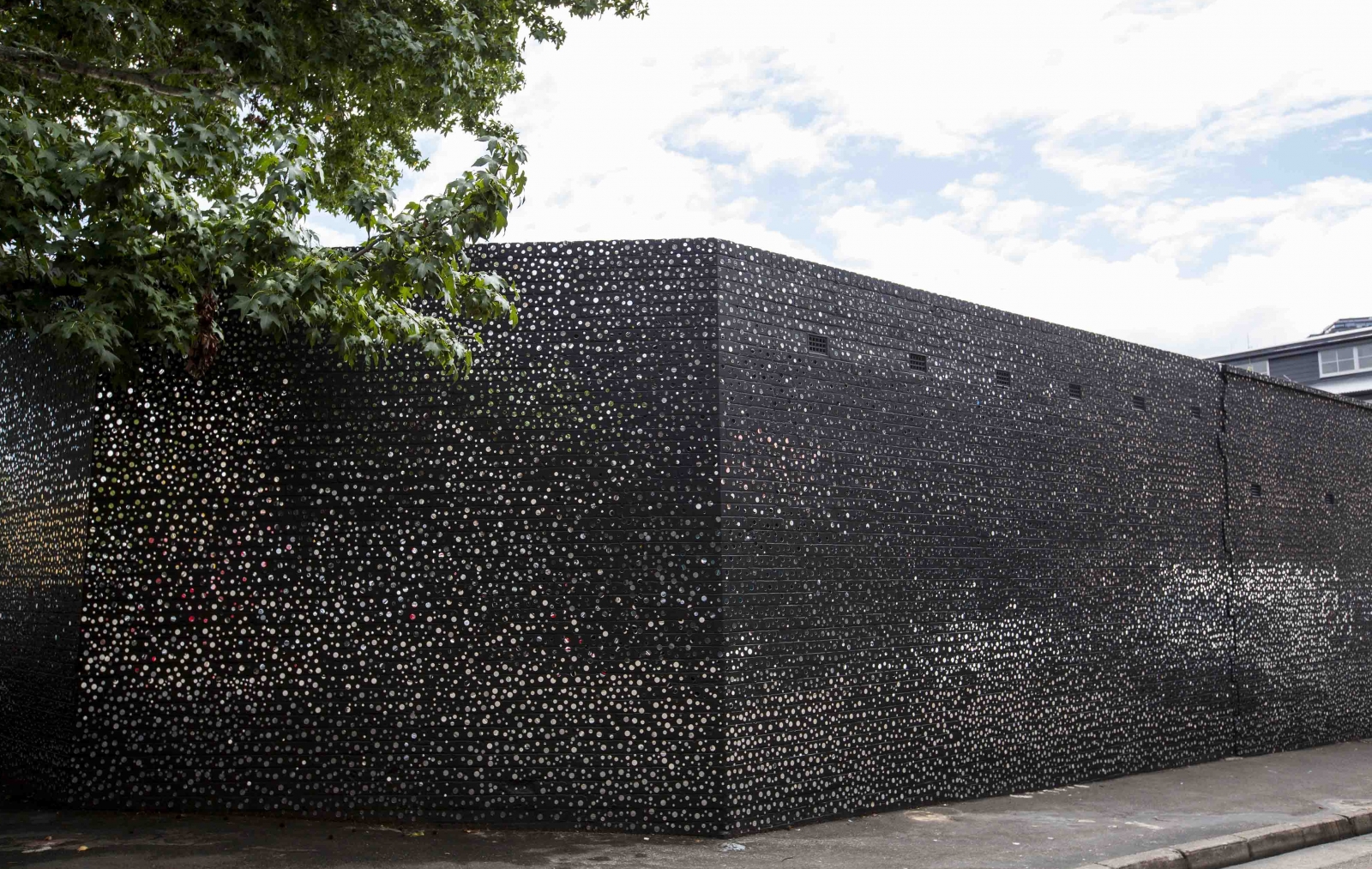
What Remains, 2016
Head away from Redfern station, past The Block and the striking Australian Aboriginal flag mural and you’ll find one of the Biennale of Sydney’s most stand-out works and another layer to an already storied and complex Sydney suburb.
Daniel Boyd is a significant and important indigenous Australian artist whose work speaks clearly of his heritage and doesn’t shy away from thorny issues. Based in Sydney, you might have seen his work at the MCA: perhaps We Call them Pirates Out Here, his parody of the British colonial invasion of New South Wales or Untitled 4; the dazzling installation he was commissioned to create for the gallery’s foyer.
It is Untitled 4 that he has re-imagined for the streets of Redfern: creating What Remains, 2016, an installation of thousands of mirrored dots on a blackened wall at the corner of Vine and Eveleigh streets. It glitters in the sun and reflects the colours and shapes of each passing person, car or dog. On a more esoteric plain, the work is “an investigation of the way we perceive reality and make sense of the world,” says the Biennale’s artistic director Dr. Stephanie Rosenthal; “referencing scientific theories about ‘dark matter’”.
But it also works on a very site-specific and every day level, as Stephanie describes. “The ever-changing surface of the work is representative of the transforming community, a meditation on the complexities of the history of Redfern and the process of gentrification that it is currently undergoing.”
The concept, agrees Daniel Boyd himself, is “quite large, but immediate as well. It’s about our connection to time and space and how it happens in an immediate sense, or how it happens in a larger concept of the universe.” He’s pleased by locals’ reaction to the work so far. “Everyone walking around here has been really interested in it, and what it means for the neighbourhood,” he says.
And what does it mean for the neighbourhood? World-class art on its doorstep, and a moment of recognition and – quite literally – reflection. Stephanie’s bold program includes art in unexpected corners of Sydney like this that help to ensure a democratic platform for viewing art. Daniel’s work is part of the In-Between Spaces strand of the Biennale, which fills in the gaps between exhibitions at institutions including the MCA, Cockatoo Island and Artspace (which for the record, are also free to the public). All this is important to the Biennale’s theme: The future is already here – it’s just not evenly distributed. “The idea of embassies and in-between spaces was really a focus on spaces where all are welcome and there are no barriers,” Stephanie says.
These in-between spaces tap into the theme conceptually: “they’re also a reference to the ‘inbetween’ of the physical and virtual,” Stephanie continues. “Boyd’s work at Redfern Wall has 12,000 lenses that reflect the world and the city back at itself, making it an ‘inbetween’ of the real and the unreal, the physical and the virtual. The lenses challenge perception and ask questions about mirrors and screens, things that are pervasive in twenty-first century life.”
In-Between Spaces is a dynamic strand of the Biennale that’s full of ideas and interpretations of the world. From the forecourt of the MCA and the Botanic Garden to Camperdown Cemetery and a street in Surry Hills, it makes for a bit of a self-guided art treasure hunt too.
Even in a 5-minute radius of Daniel’s work at Redfern Wall there are two more interesting installations: Keg de Souza’s We Built this City, 2016, a makeshift space on Vine Street built from tents that will host a series of discussions and tours around issues of displacement. And, round the corner on Abercrombie Street, Oscar Murillo has created an artwork in the tiny, unused gap between two ordinary houses. The work remains unfinished though: on his way from the UK to Sydney to complete it, the Colombian-born, British-based artist decided that a more powerful artistic statement would be to rip up his British passport – Australian visa and all – to be detained and sent back to Colombia. A performative piece that pulls into focus the different privileges and hierarchies of passports.
So pause for thought at these small, in-between spaces in the city to reflect on the world at large.
The Biennale of Sydney runs until June 5 2016.
